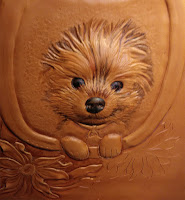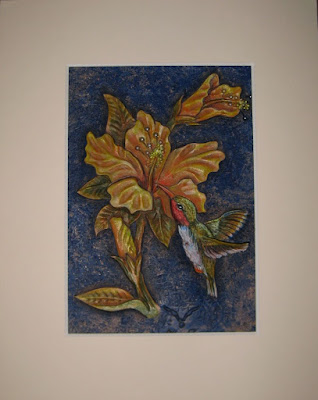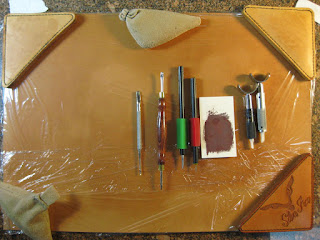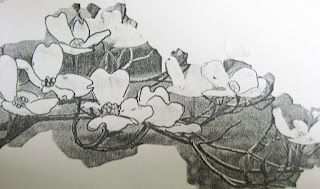
Creating: A Special Pet Portrait For many people pets become a very special part of their lives so I always look to capture a unique characteristic that is special for the individual. In this case the lady always carried her little dog in a cloth handbag. In this design in progress, the pup is framed by and looking out of the handbag. Because the fabric will be blue I chose yellow cone flowers to accent the composition and complement the color of the bag. On this extreme embossed figure gave a base color to the eyes and nose to give a sense of realism. The seeming grin on her face is because she is a very old dog and has lost the top canine tooth on the left side. Her tongue would stick out but I allowed the dignity of a precious face without too many details. Beginning the color using a Grisaille (French: Gris means Gray) painting style I add shading to the image. But it's purple!!😧 not gray . Yes, I developed this technique when painting on leather long ago becaus...





